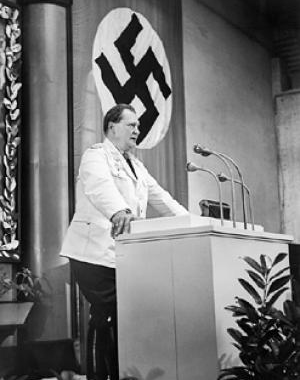Until the last quarter of the Twentieth Century, weapons and
equipment in novels were usually only vaguely described. C. S. Forester proved
an exception, as did F. Van Wick Mason. Forester described the vessels, cannon,
and small arms of the British Royal Navy during the Napoleonic Wars in some
detail. Mason did likewise in his historical novels about the American
Revolution. This was one reason I
was drawn to their work. However, they remained the
exception rather than the rule.
In 1984, the Naval Institute Press published Tom Clancy’s
novel, The Hunt for Red October. In
1986, the publisher followed up with Stephen Coonts’s Flight of the Intruder. Rich in detailed descriptions of up-to-date military weapons
and equipment, these books issued in a new genre, the techno-thriller. Both became runaway best sellers. Dozens, perhaps hundreds of authors
emulated their style. I confess to being one of them.
When I began my first novel, Fall Eagle One, I set out from the beginning to write a World War
II techno-thriller. During the
latter years of the war, Germany made giant leaps in aviation and weapons
technology. Many historians believe that, had Hitler encouraged rather than
hindered these developments earlier, the tide of battle might have turned. His insistence that the Me-262 jet
fighter carry bombs delayed its widespread introduction by at least a year. The
specter of hundreds of jet fighters attacking our 8th Air Force
bombers as early as 1943 is not pleasant to contemplate. He even initially
cancelled production of the MP-44, the world’s first assault rifle. He
considered nuclear physics to be “Jewish physics,” and therefore to be spurned.
Germany’s failure to speed
development and deployment of all these new “cutting edge” technologies presents
many “what-if” ideas for novelists.
The inanimate protagonists I chose for Fall Eagle One are the Messerschmitt-264 inter-continental bomber (Amerika Bomber) and two radio-controlled bombs, the Ruhrstahl FritzX and the Henschel Hs 293. The Me-264 bore a striking
resemblance to the Boeing B-29 and had a range to reach the U.S. East Coast.
Both the glide bombs sank major warships, including the Italian battleship, Roma. Fall Eagle One marries these weapons in a mission to the U.S. to
kill FDR. I purposefully included the level of descriptive detail employed by
Clancy and Coonts. Since I am an engineer, I felt confident in fictionally
equipping the bomber with more powerful engines and using actual in-flight
refueling technology from the era to extend range. During my extensive research
on these weapons, I realized that they were becoming major characters of the
novel.
Most of the 5-star reviews of FallEagle One on Amazon.com specifically praise my level of descriptive detail.
A few of the less-than-flattering 3-star reviews criticize it. With about a 7:1 ratio of 5-star to 3-star reviews, I can live with
that ratio.
My second novel, Hold Back The Sun,
is set in the Western Pacific during the opening months of the Pacific War. In
relating the heroic battles of the U.S. Asiatic Fleet against the Japanese
Navy, I describe the ships and aircraft in a fashion similar to that of C.S.
Forester.




